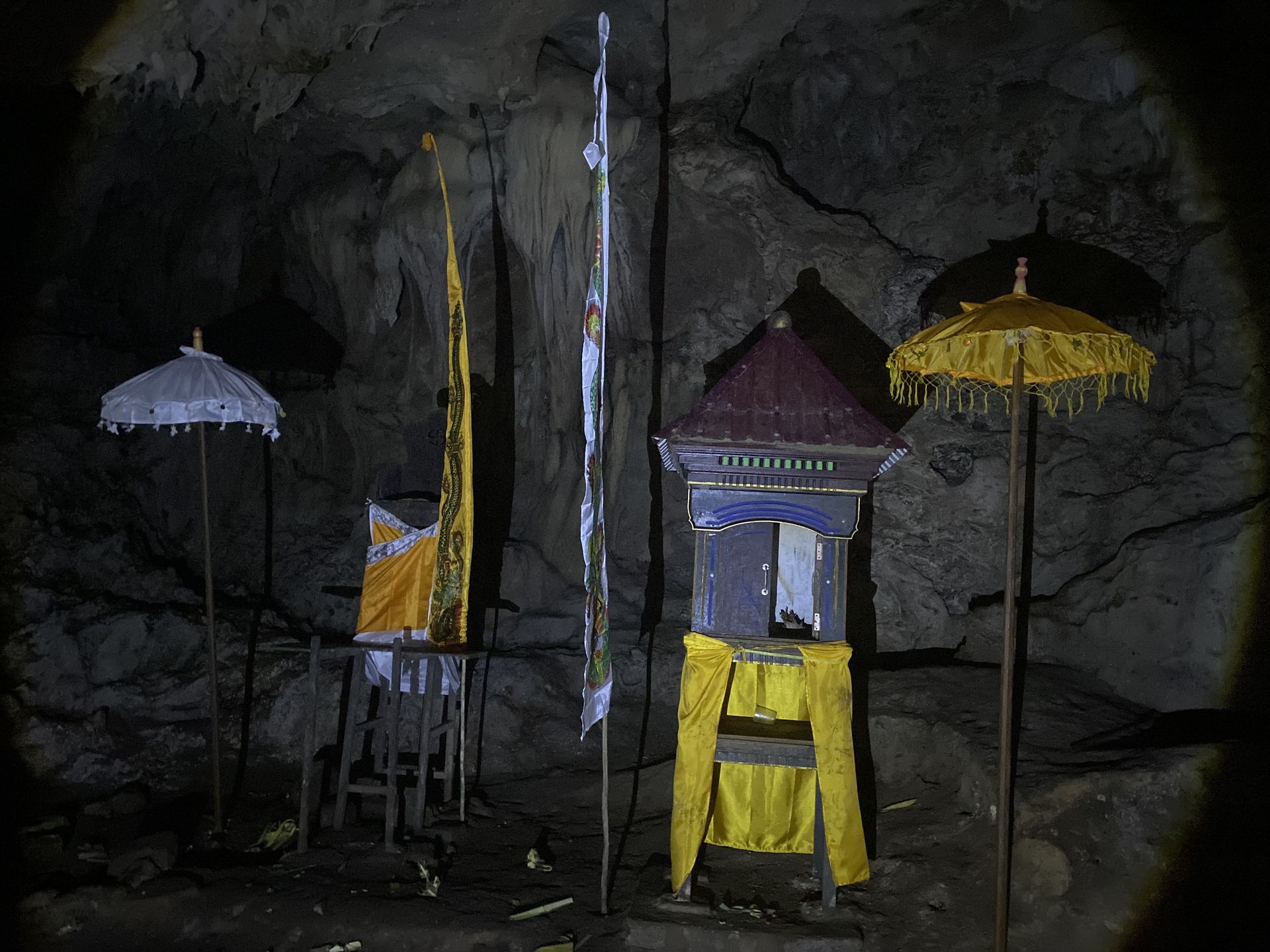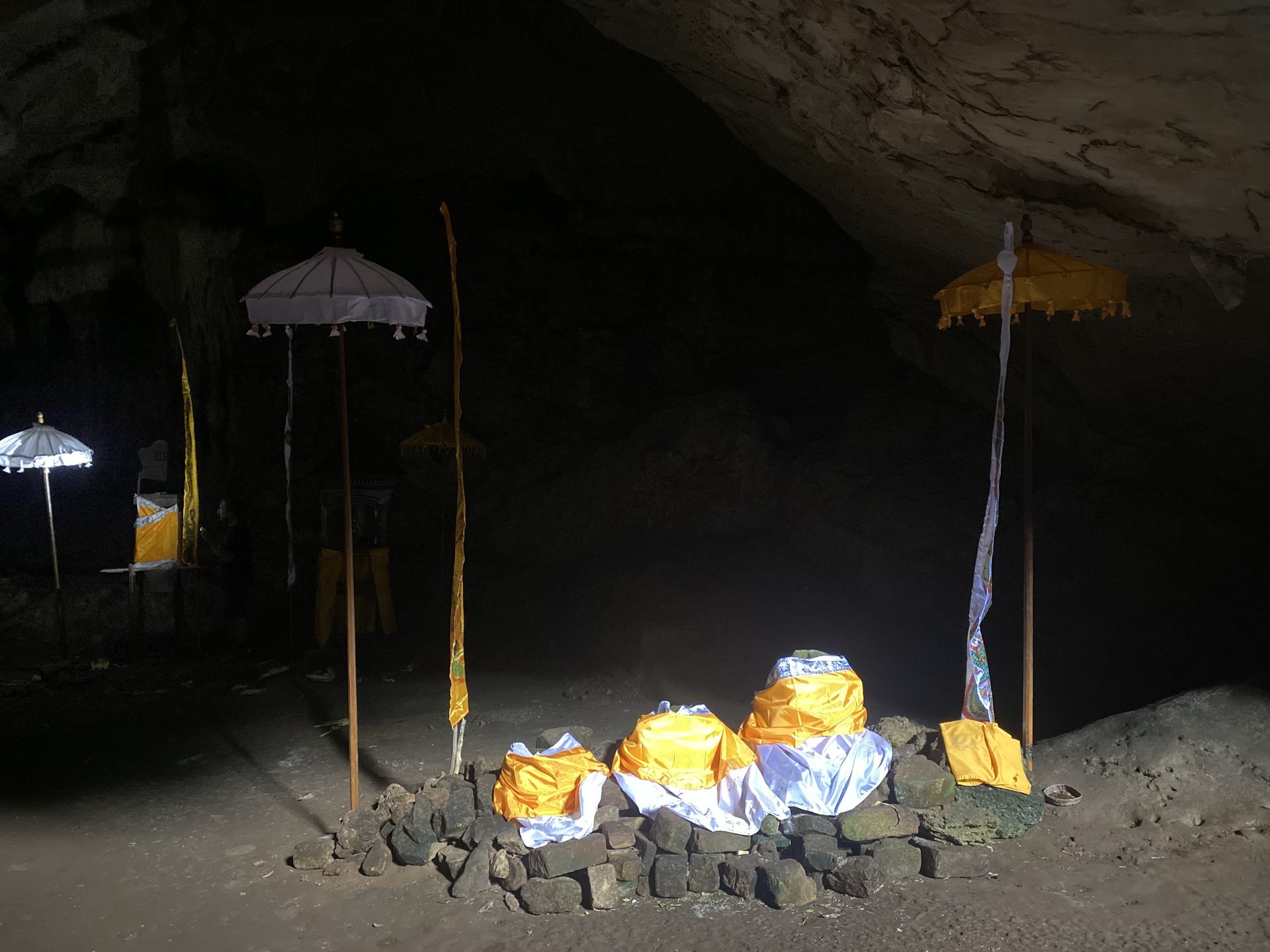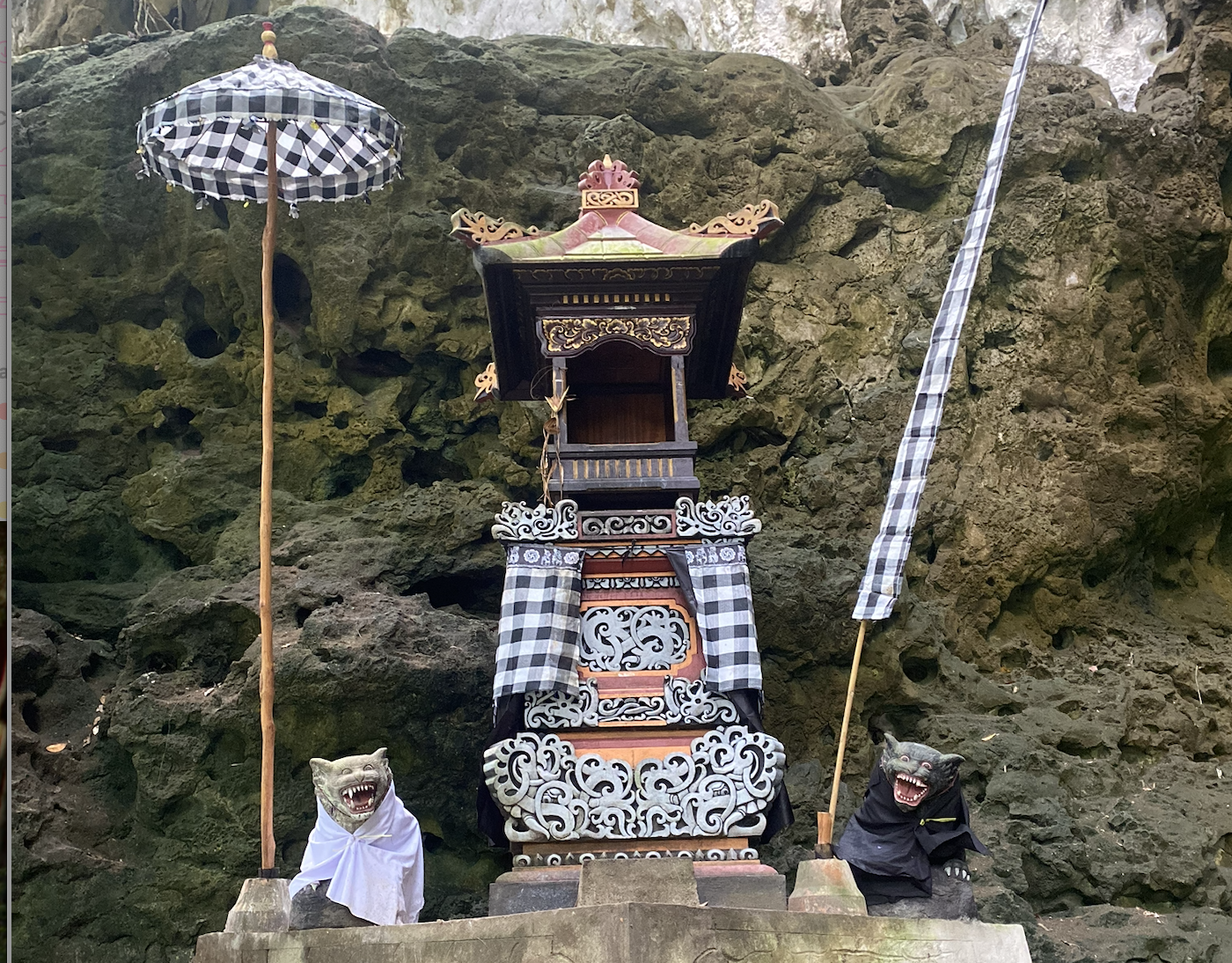Arca of Gua Angin Kombeng: Historical Relics of the Kutai Martadipura Kingdom

In the calm natural surroundings of Kombeng, East Kutai, lies a site rich in history and spiritual value, Goa Angin. This cave is not only known for its natural beauty but also as an important archaeological site that preserves the legacy of the Kutai Martadipura Kingdom, the oldest Hindu kingdom in the Indonesian archipelago.
Traces of Hindu Worship Inside the Cave
Inside Goa Angin, visitors can still see Hindu ceremonial objects once used for prayers and offerings. Sacred umbrellas in white and yellow, symbols of purity and protection, stand near small wooden shrines covered with the same colored cloths. These pelinggih (altars) were places of offering to Hindu deities and ancestral spirits.
The color yellow represents the wisdom and strength of the god Vishnu, while white symbolizes purity and balance. The cave’s peaceful and mystical atmosphere made it an ideal place for worship, where ancient communities honored the forces of nature and divine guardians of life.
The Arca as Evidence of Kutai Martadipura’s Civilization

According to local accounts, three stone statues depicting Shiva, Ganesha, and a worshipper figurewere once discovered inside the cave. These statues are believed to date back to the era of the Kutai Martadipura Kingdom, which flourished along the Mahakam River thousands of years ago.
To preserve these important relics, the three main statues were later relocated to the Mulawarman Museum in Tenggarong. The relocation was part of an effort to protect the artifacts from damage and ensure that future generations can learn about East Kalimantan’s ancient Hindu heritage.
A Living Spiritual Legacy

Although the statues are now kept in the museum, Goa Angin continues to radiate a sacred aura. The small shrines and colorful fabrics inside the cave stand as symbols of the living connection between history, faith, and nature that the people of Kombeng still honor today.
Goa Angin is not merely a natural attraction but also a living monument to the spiritual and cultural journey of the Kutai Martadipura civilization, a timeless reminder of the deep harmony between human belief and the natural world.